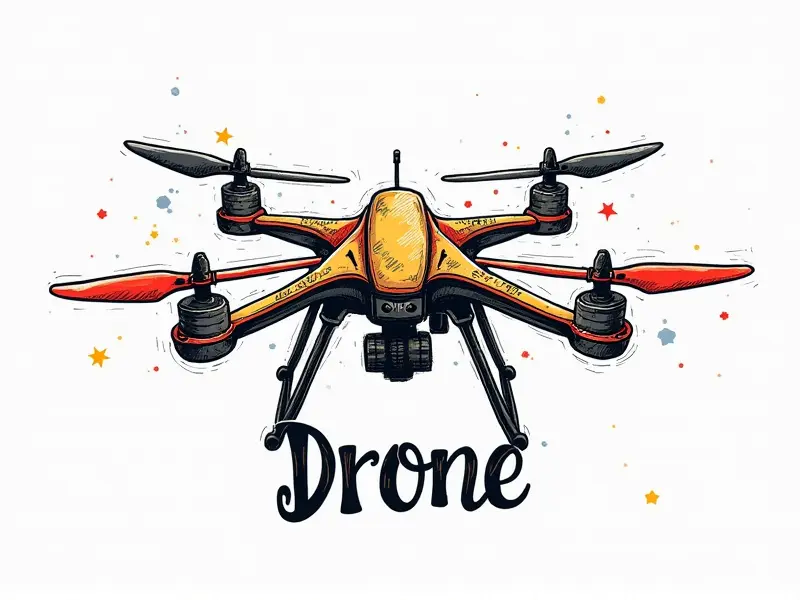How fast are repair drones?

Top Speeds of Repair Drones Revealed
The world of repair drones is constantly evolving, with advancements in technology pushing the boundaries of what these machines can achieve. One of the most critical aspects of a repair drone's performance is its speed. In this article, we will delve into the top speeds of repair drones and explore how they operate at such high velocities.
Maximum Speed of Repair Drones Explained
The maximum speed of repair drones varies significantly based on their design and intended use. For instance, a small, lightweight drone designed for rapid deployment might have a top speed of around 60 mph (97 km/h), while larger, more robust models used in industrial settings can reach speeds up to 120 mph (193 km/h).
Racing with Repair Drones: Top Speeds
When it comes to racing repair drones, the competition is fierce. Engineers and manufacturers are constantly pushing the limits of what these machines can do. In a typical race, you might see a variety of drone models competing, each optimized for different aspects such as maneuverability, payload capacity, or sheer speed.
Fastest Repair Drones in Action Today
The fastest repair drones currently in use are those developed by leading tech companies like DJI and Parrot. These drones can reach impressive speeds of up to 150 mph (241 km/h) while maintaining stability and precision during high-speed maneuvers.
How Quickly Can Repair Drones Respond?
The responsiveness of repair drones is crucial in emergency situations where quick action is necessary. Advanced sensors and AI algorithms enable these drones to respond almost instantaneously, often within milliseconds after receiving a command or detecting an issue that needs attention.
Limits of Repair Drone Flying Speeds
- Design Constraints: The physical design of the drone plays a significant role in determining its maximum speed. Factors such as aerodynamics and propulsion system efficiency are critical.
- Battery Life: High-speed operation consumes more power, which can limit the duration of missions.
- Safety Regulations: Many regions have strict regulations regarding drone speeds to ensure public safety.
The Swift World of Repair Drones
In the fast-paced world of repair drones, speed is not just a feature but a necessity. Whether it's responding to an emergency situation or completing routine maintenance tasks quickly and efficiently, these machines are designed to operate at optimal speeds.
Repair Drones: Racing Against Time
The ability to race against time is one of the most compelling aspects of repair drones. In industries such as construction, manufacturing, and telecommunications, downtime can be extremely costly. Repair drones help minimize this downtime by providing rapid response times and efficient repairs.
What's the Max Speed of Repair Drones?
The maximum speed of repair drones is a topic of ongoing research and development. While current models can reach impressive speeds, future advancements in materials science and propulsion technology may push these limits even further.
Flying at Maximum Speed: Challenges and Opportunities
- Challenges: Maintaining stability and control at high speeds is a significant challenge. Advanced stabilization systems are required to ensure the drone remains responsive and safe during operation.
- Opportunities: The ability to fly faster opens up new possibilities for rapid deployment in emergency situations, reducing response times and potentially saving lives.
Limits of Repair Drone Flying Speeds
The limits of repair drone flying speeds are dictated by a combination of technical constraints and regulatory requirements. While the potential exists to push these boundaries further, practical considerations such as battery life, aerodynamics, and safety regulations must be carefully balanced.
Breaking Down Repair Drone Top Speeds
- Aerodynamic Design: Optimizing the shape of the drone for minimal air resistance is crucial for achieving high speeds.
- Propulsion Systems: Advanced propulsion systems, such as electric motors and efficient battery technology, are essential for powering these high-speed machines.
Understanding Repair Drone Flight Speeds
To fully understand the flight speeds of repair drones, it's important to consider not just the maximum speed but also how this performance affects other aspects such as maneuverability and payload capacity. Balancing these factors is key to developing highly effective repair drones.
Conclusion
The world of repair drones continues to evolve at an incredible pace, with advancements in technology enabling faster, more efficient machines capable of performing critical tasks swiftly and reliably. As we look to the future, it's clear that speed will remain a key factor in driving innovation within this field.

